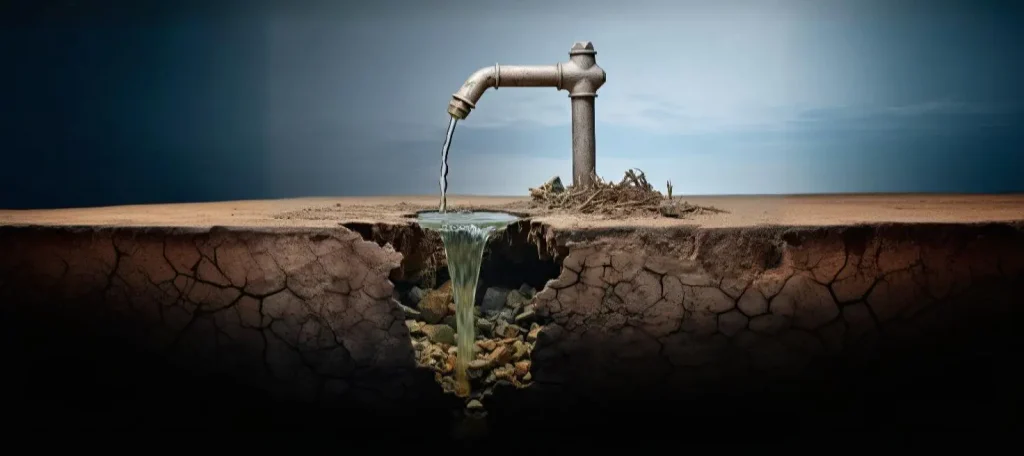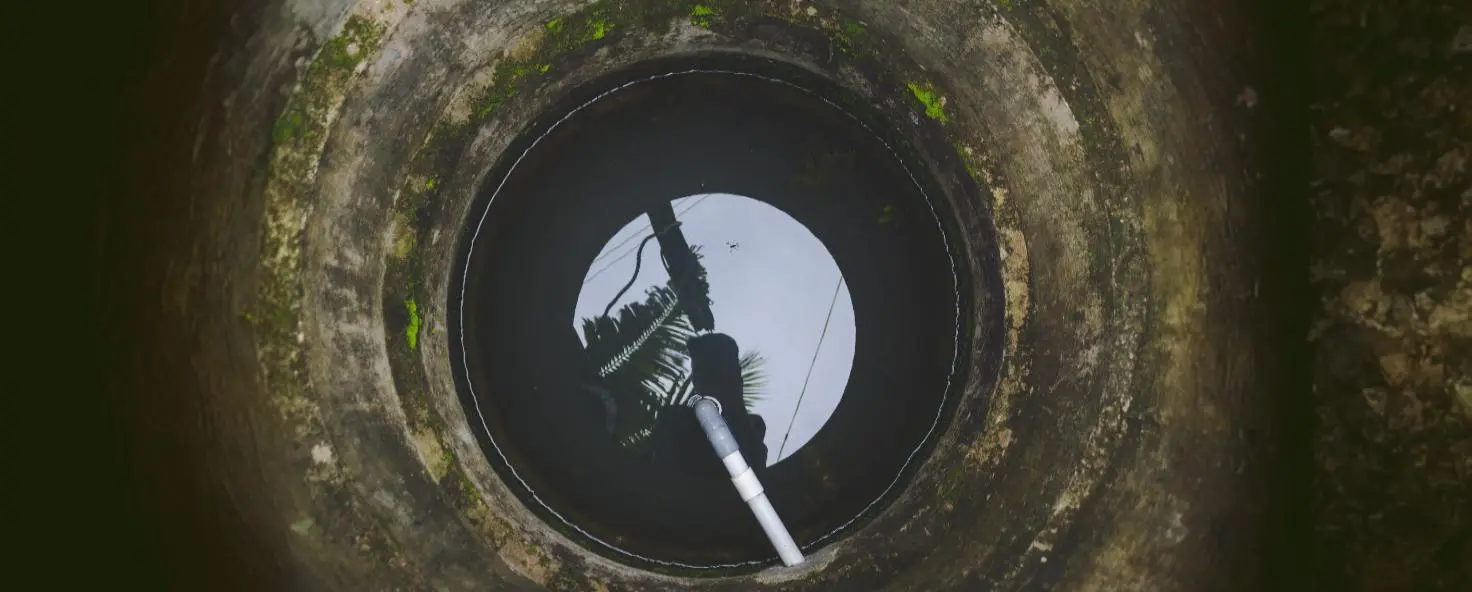Water scarcity is a major problem affecting millions of people and places worldwide. The depletion of underground water resources is one of the leading causes of this problem and groundwater harvesting serves as a significant solution. One of the ways of ensuring effective groundwater recharge is to build recharge pits. Read on to learn about what a recharge pit is, how groundwater is recharged by such pits and the components and design of a rain water recharge pit.
What is Groundwater Recharge?
The earth has aquifers and water bodies located under the land surface between rocks and soil. This water is called groundwater. However, groundwater is a limited resource which is rapidly depleting due to human interventions. Recharging groundwater involves the diversion of water from land surfaces to underground reserves and is an important measure to ensure water security. Groundwater recharging can be achieved by two ways- natural and artificial. While natural systems involve the natural movement of water through landscapes and into water bodies, artificial systems include man-made measures to direct water towards certain locations such as recharge pits.
What is a Recharge Pit?
A recharge pit, commonly referred to as a recharge well or percolation well, is an artificial ground water recharge method. It collects water from different points in a property and then diverts this water underground, helping replenish groundwater systems. Known for being simple to construct and occupying little space, the inclusion of a recharge pit in newly built homes is quickly becoming a mandatory requirement in many cities in India.
Importance of a Recharge Pit
Recharge pits are vital for several reasons today, some of which are:
Groundwater Replenishment
Groundwater resources are rapidly getting depleted due to human activities. With the extreme increase in urbanisation and built-up areas across the world, the amount of rainwater that gets recharged to the ground is drastically reducing everyday. Incorporating recharge pits in building projects helps restore the balance between rain and groundwater by intentionally diverting rainwater to the desired locations, thus playing an invaluable role in maintaining environmental harmony.

Prevention of Floods
Due to issues like deforestation and depletion of natural water bodies such as lakes and ponds, especially in urban areas, rains often lead to water accumulation and flooding. Recharge pits prevent this water accumulation by efficiently collecting rain water in properties and diverting it underground. This underground water can then be used for sustenance by trees, and trees in turn aid in preventing floods by maintaining soil strength and mobility.
Water Filtration
Recharge pits can also be incorporated into storm water drains. Here, they can filter out solid waste materials like debris, leaves and silt, before directing the rainwater into the ground. Thus, recharge pits ensure that only filtered and comparatively purer water gets recharged. Since the same water is utilised for various domestic activities and consumption, the physical wellbeing of living beings can also be ensured by a recharge pit system.
Regulatory Compliance
Bye-laws and regulations in several cities in India mandate the inclusion of recharge pits and rainwater harvesting systems. For example, in Bengaluru (within BBMP—Bruhat Bengaluru Mahanagara Palike—limits), it is mandatory to have a recharge pit in a site of area more than 2400 sq ft with a built-up area more than 1200 sq ft. Thus, including a water recharge system often ensures that a building project adheres to local guidelines, making the process of obtaining building approvals much smoother.
Components of a Recharge Pit
A typical water recharge pit consists of the following elements:
Catchment Area
A catchment area refers to any space where rainwater falls and/or accumulates. This includes all the rainwater harvesting points such as terraces in homes, open spaces that may be paved or unpaved, building roofs and semi-open spaces like balconies and verandahs. To ensure effective drainage and prevent flooding, such areas are provided with adequate slopes that direct water along certain pathways.
Water Diverters
Plumbing appliances and systems collect water from catchment areas and transport it towards recharge pits. Inlet and outlet pipes, downspouts, rain chains and roof gutters are all common parts of this conveyance system. It is important to include appropriate barriers like Nahani traps and grills to ensure that solid particles do not enter this system and create blockages.
Recharge Well
A recharge well acts like a collection tank for all the rainwater accumulated in a property. It generally consists of rings made of precast concrete or constructed with brick or stone masonry. These rings are placed below the land surface up to the required depth, creating a hollow collection space. For the recharge pit to be effective, these rings must be impervious, thus preventing leakage of water sideways.
Water Filters
Grills, gratings or other types of perforated surfaces are typically used to cover the tops of recharge pits and prevent solid particles like leaves, debris and plastic from entering them. The base of recharge wells is made up by layers of filtration systems. Most often, these filters include natural materials like gravel, stones and sand, which filter out particles like sand and silt while allowing water to flow through.
Recharge Shaft
The base of a borewell recharge pit often consists of a pipe that is drilled deep into the ground. This pipe carries water down to the actual level of the aquifer, ensuring effective and efficient water recharge. This pipe may be made of PVC or metal, depending on the site and soil conditions. However, this is not a necessary component in recharge pits and is required only in tricky or rocky terrain conditions.
Recharge Pit Design Considerations
Numerous factors must be considered in order to design an effective recharge trench. Some of the most important ones are:
- Groundwater Depth: The depth of groundwater differs widely in each location and the size and depth of a recharge pit must correspond with this. For example, in coastal areas, recharge pits can be comparatively shallow as sand can naturally carry water downwards.
- Soil Type: Rocky or weak soil conditions necessitate the use of stronger materials like RCC (Reinforced Cement Concrete) or stone for the construction of recharge wells. This can increase the project budget as well as construction timelines.
- Site Conditions: A recharge pit is ideally located in the lowest part of a site. This ensures that water follows its natural pathways and enters the pit without the need for too many diverters.
- Project Size: The number and size of recharge pits required in a property depend on the site area and built-up area. For example, one recharge pit with a 3 ft diameter is generally sufficient for a plot area of less than 2000 sq ft with a built-up area of less than 4000 sq ft.
Recharge Well for Homes
Hiring well diggers or separate agencies for building recharge wells can be tedious. However, Brick & Bolt is a leading construction company in India that provides end-to-end construction services. With 7000+ completed homes, expert completion of projects is assured with absolute regulatory compliance, which includes the construction of rainwater harvesting systems and recharge pits as required locally. To ensure that your home is built responsibly and with the necessary sustainable technologies, contact Brick & Bolt today!

